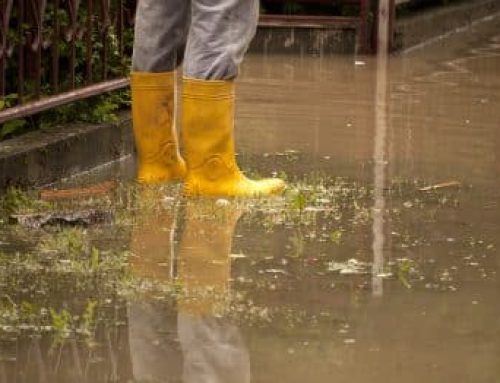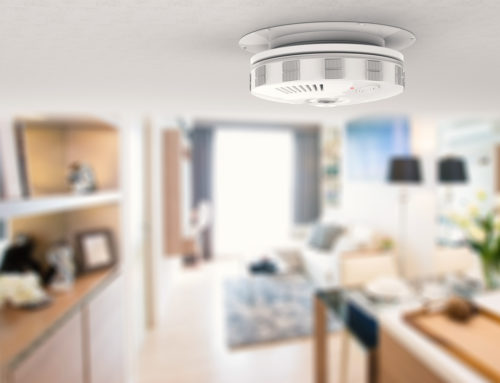The question is always, “When is it a flood?” Because we deem various types of water events “floods” even if they do not meet the insurance definition, it can become confusing to know where your coverage lies. In addition, many people are not aware that Flood coverage must be purchased separately from their Property or Liability policies. Add yet another complication of water damage that occurs during a Named Storm like a tropical storm or hurricane and you get an even soggier, wet mess. Is water backing up in your basement? You may say “The basement flooded.” But did it really, or is that Sewer Backup or Water Damage? And then what about the small stream that seems more like a mud shake in its consistency? Is that Flood? Mudslide? Water Damage? Ugh…definitely “clear as mud!”
Welcome to our “Is It Covered?” series. For a fuller introduction of the series, read HERE. We hope these quick reads will help you increase your understanding of your insurance coverage, clear up confusion and help you avoid preventable losses! Please bear in mind that insurance policies may vary, so always check your own policy for language specific to your covered property. If you have coverage questions, don’t hesitate to call your agent who will be happy to assist you!
What is a Flood in Insurance Terms?
FEMA defines a flood as a “general and temporary condition of partial or complete inundation of two or more acres and two or more properties of normally dry land.” In addition, flood damage can only be caused by the “overflow of inland or tidal waters, unusual and rapid accumulation or runoff of surface waters from any source, mudflow, or collapse of land along the shore of a lake or a similar body of water as a result of erosion or undermining caused by waves or currents of water exceeding anticipated cyclical levels.” In other words, a Flood may occur when water from natural sources, such as rivers and lakes, breach banks during heavy rains or when the ground is over-saturated with water and causes the excess to seep through foundations or other vulnerable parts of the structure.
How Does Flood Differ From Water Damage in Insurance?
Water Damage must be “sudden and accidental” to be covered, such as a pipe bursting or the accidental overflow of a bathtub. In colder seasons if freezing causes a pipe to burst, one must certify that they have done their best to maintain heat in the building or have fully drained the system and shut off the water supply in order for coverage to be available for the ensuing water damage. Rain that damages the interior of a property after the roof is compromised from a storm also falls under the category of Water Damage. It should be noted that Water Damage coverage is only available under the Special Form policy format. So many things to be mindful of when protecting your property from water!
What is Sewer Backup?
Sewer Backup is another common exclusion in property policies and is defined as “water that backs up or overflows from a sewer, drain or sump.” (ISO) Drains and sewers can back up during storms. So, what you or I call a “flooded basement” may or may not technically be “flooded” when it comes to insurance – it all depends upon how the water enters the dwelling. That stated, investors will want to make sure that any drainage systems in basements are well-maintained and that sump pumps are regularly tested to help avoid water damage from Sewer Backup.
Is a Storm Surge from a Named Storm Considered Flooding?
If you are in an area where your property policy excludes coverage for Named Storm, such as in Tier 1 or Tier 2, you will need to purchase additional coverage if you would like to be covered when the next tropical storm or hurricane rolls through. Though it may not happen frequently, catastrophic coverage like Named Storm can be vitally important as the damage can be some of, if not the costliest property damage you may experience. To put it simply, you could lose your entire investment. Flooding resulting from a storm surge triggered by a Named Storm would only be covered with Flood coverage.
How Do I Add Coverage for Floods?
Your agent can typically write a Flood policy for your property. It may be written through the National Flood Insurance Program (NFIP) or a private insurer, but you will always have a separate Flood limit and Flood deductible. Adding Flood does typically increase the premium significantly as most catastrophic coverages (Named Storm, Earthquake, etc.) do. The NFIP has designated specific flood zones that will impact the rate depending upon the specific flood risk at that site.
What Does the Technical Lingo for This Exclusion Look Like in My Policy?
Sample policy language may look like this:
“We will not pay for the loss or damage caused directly or indirectly by…Water:
- Flood, surface water, waves (including tidal wave and tsunami), tides, tidal water, overflow of any body of water, or spray from any of these, all whether or not driven by wind (including storm surge);
- Mudslide or mudflow;
- Water that backs up or overflows or is otherwise discharged from a sewer, drain, sump, sump pump, or related equipment;
- Water under the ground surface pressing on, or flowing or seeping through:
- Foundations, walls, floors, or paved surfaces;
- Basements, whether paved or not; or
- Doors, windows, or other openings; or
- Waterborne material carried or otherwise moved by any of the water referred to in Paragraphs 1, 2, or 3, or material carried or otherwise moved by mudslide or mudflow.
This exclusion applies regardless of whether any of the above, in Paragraphs 1 through 4, is caused by an act of nature or is otherwise caused. An example of a situation to which this exclusion applies is the situation where a dam, levee, seawall, or other boundary or containment system falls in whole or in part, for any reason, to contain the water.”
As insurance policies may vary, please check your own policy for language specific to your covered property.
How Much Can Flood Damage Cost?
Any catastrophic event has the potential to completely destroy a property and cause severe or fatal injuries. You may be lucky and have little damage from a Flood, or you could suffer a total loss of your investment.
What Can I Do to Protect My Investment?
First, know what is in your policy: Read the sections of your insurance policy that address Water and Named Storm. It is important to know both what you are and are not covered for. If you don’t understand your coverage or have questions, don’t hesitate to ask your agent who should be happy to help you! If you don’t have Flood coverage currently and are in an area of increased risk or would like to protect your property from flash flooding, ask your agent about purchasing Flood coverage.
Be sure all drainage is working properly: Depending upon the topography of the land on which your property sits, you may have to do some work on your drainage systems to avoid flooding. Just because you are on a hill does not mean that you are not susceptible. Ground that slopes toward the foundation on an otherwise flat grade can be just as problematic as living in a low-lying area by a river or stream. Don’t be hesitant to call in a pro to help you solve your water issues. Hiring them is typically less than the cost of your deductible. And, if you haven’t purchased Flood, you may not have any insurance to help defray the cost. Prevention is key!
Make sure your sump pumps are working: Make sure your sump has a backup battery in case of a power outage. Excessive rain, downed trees, and other plant debris back up city drains, causing additional drainage issues. If there is a catastrophic flood there may be nothing you can do besides keeping your sump going, which may save you a lot of headache and money in a more localized flash flooding event.
Prevent mold: Mold can grow within 24-48 hours after a water event like a burst pipe. If you add heat to the equation, you’ll have a recipe that mold really loves. As such, it is imperative after a storm to dry out your property as quickly as possible. You may need to call in a water mitigation company to help if the job is a large one. Mold is typically excluded from most property policies so swift action to remediate any mold issue is critical!
Give your tenant information about storm safety: You may not always rent to a native of the state, and though they may be familiar with the motto “Turn around don’t drown,” that doesn’t guarantee they will know what to do if the waters start to rise around them. Should they bring out the canoe? Climb up on the roof and wait for rescue? As a part of your welcome packet, you may want to include information about how to make an emergency kit and resources to find safe shelter and first aid during a catastrophic event.
Make sure your tenant understands their personal property isn’t covered by your insurance: Require your tenants to carry renters insurance in the lease and enforce it. Let them know any insurance you carry on the property as the owner does not apply to their personal belongings. Impress upon them the importance of reporting any hazardous conditions on the property to you or your property manager immediately. You may want to include a section in your lease where the tenant acknowledges their understanding of these items. Another option is to purchase a product like our Tenant Protector Plan that does provide content coverage for your tenant.






